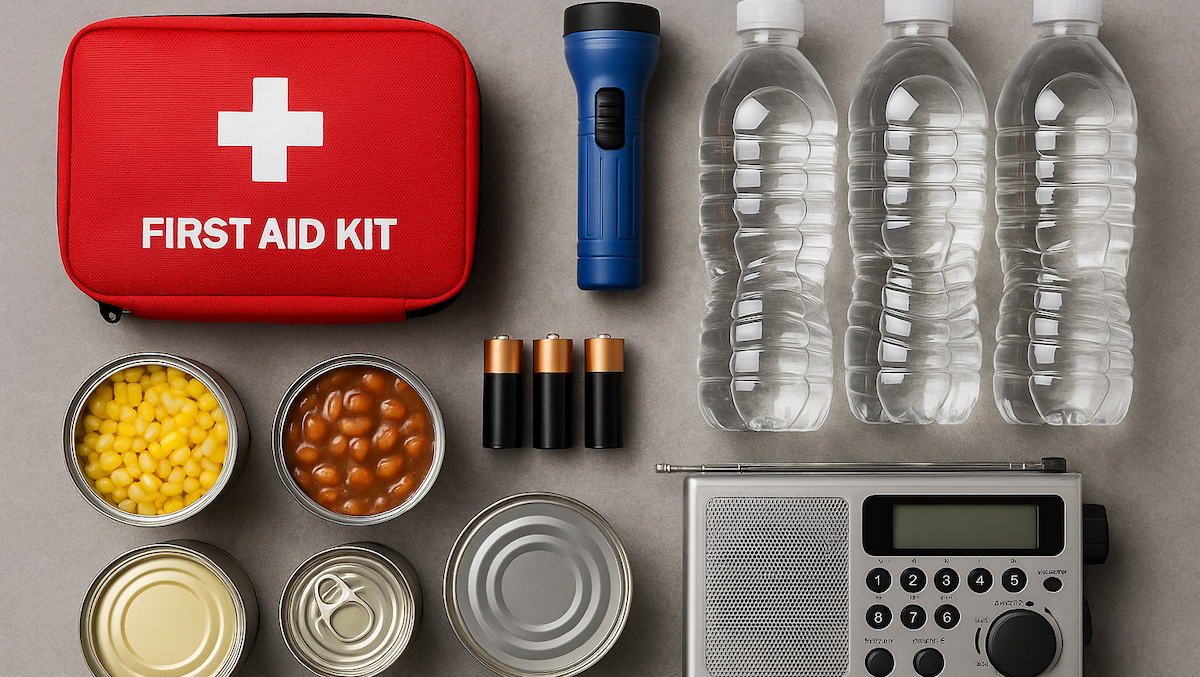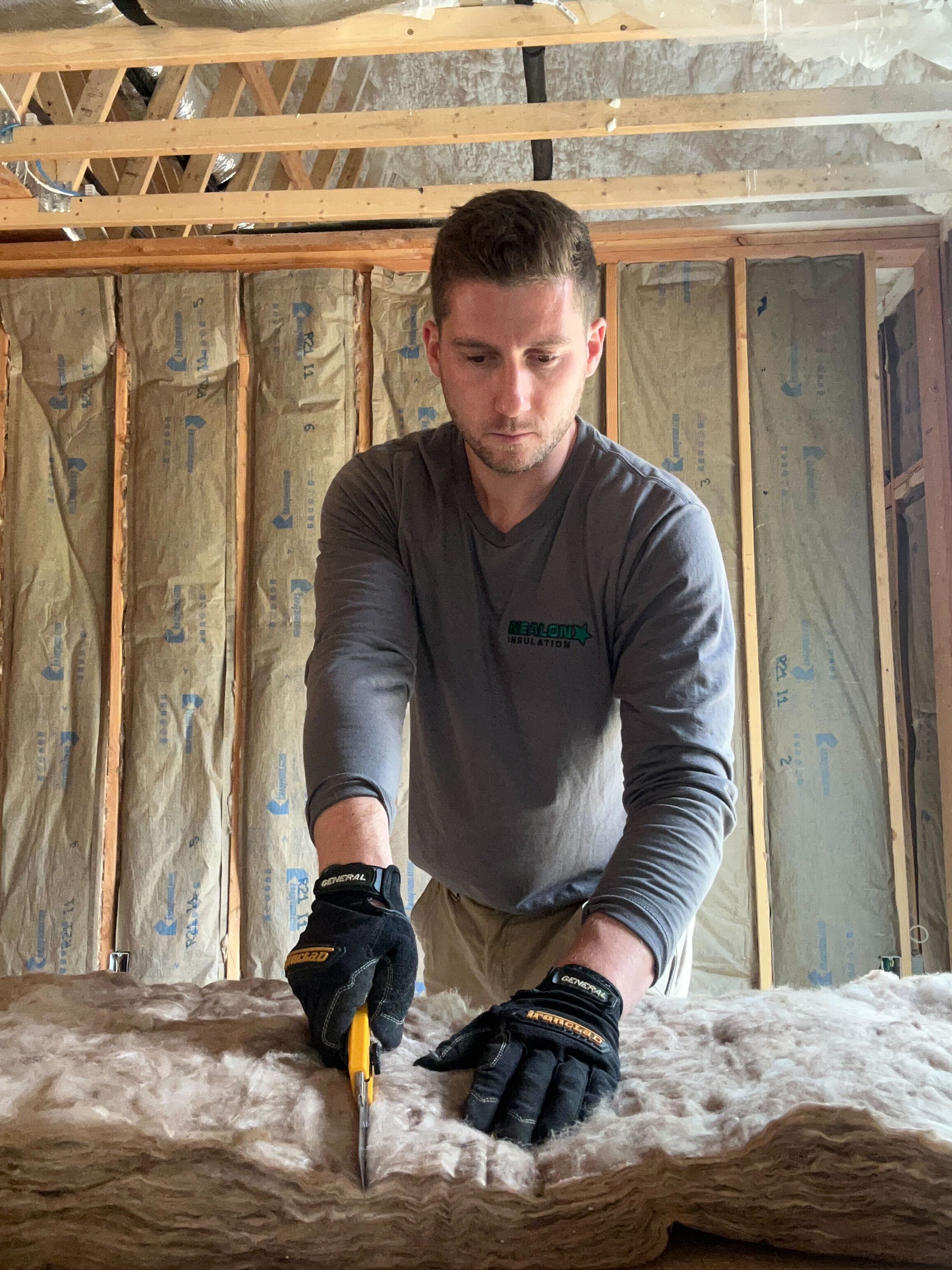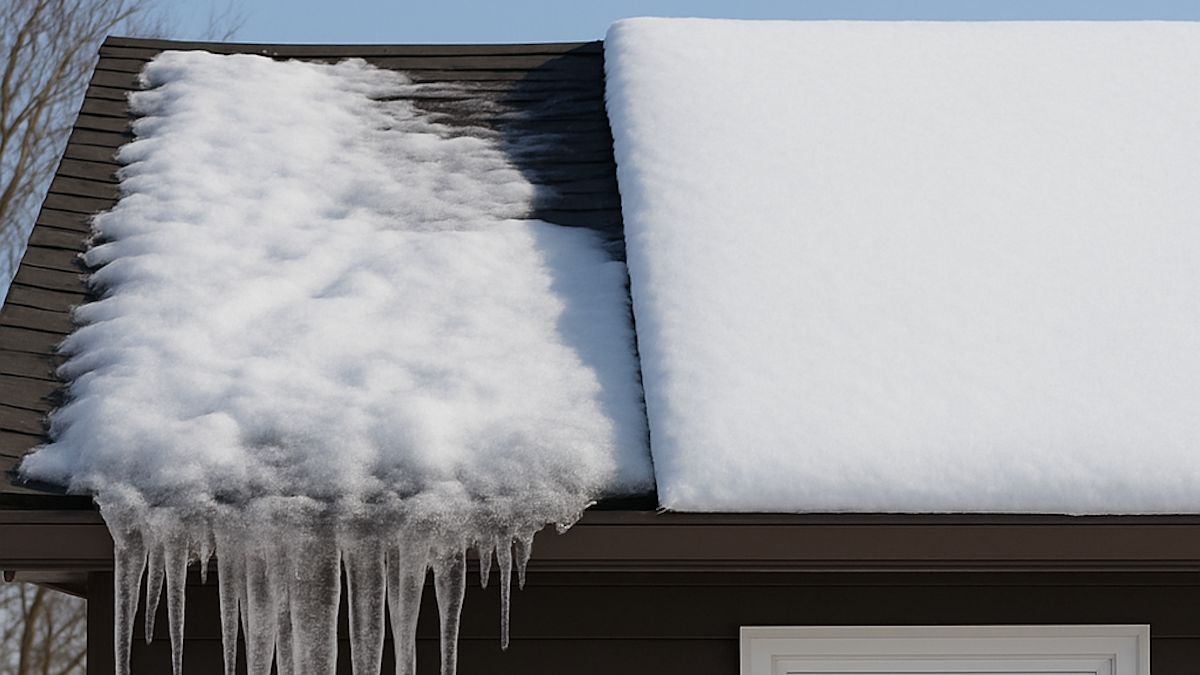Connecticut Winter Storm Preparation Checklist: How to Protect Your Home Before the Cold Hits

Connecticut winters don’t mess around. One week you’re raking leaves, the next you’re digging your car out of a nor’easter while the power flickers and the pipes start making noises they shouldn’t.
Every year, homeowners swear they’ll get ahead of winter—then the first real cold snap hits and it’s a scramble for space heaters and pipe insulation at the hardware store. This time, let’s flip the script.
This winter storm preparation checklist covers everything you need to protect your home before the mercury drops—insulation, frozen pipe prevention, and a few emergency must-haves that make all the difference when the lights go out. Whether you’re on the shoreline or further inland, a few weekend prep steps now can save you thousands in repairs (and a whole lot of stress) when the next storm rolls through.
Start with a Whole-Home Winter Check
Think of this like a pre-flight inspection for your house. Before the first frost hits, you want every system—roof, heat, insulation, and plumbing—ready for takeoff. Most winter disasters aren’t from “acts of God,” they’re from small stuff we didn’t catch early.
Start outside: clean out those gutters, make sure downspouts are clear, and eyeball your roof for missing shingles or loose flashing. Ice dams love neglected gutters and tiny leaks.
Then move inside. Feel for drafts around windows and doors—if you can feel cold air creeping in, your heat’s slipping out (and your utility bill’s climbing). A cheap tube of caulk or some weatherstripping can save you a few hundred bucks in wasted heat.
Don’t forget the attic and basement. These are the two biggest weak spots for energy loss in Connecticut homes. Peek at your insulation—if you can see the tops of the joists, it’s too thin. Add a few more inches before the cold sets in.
Finally, give your heating system a test run. Turn it on before the first deep freeze, listen for weird noises, and make sure every room heats evenly. If something’s off, now’s the time to call the HVAC tech—not when there’s a foot of snow on your driveway.
Insulate to Lock in Heat and Prevent Freezing
If heat is money, insulation is your savings account. Every crack, gap, or bare patch in your attic is like leaving the window open with the heat on. And in a Connecticut winter, that’s not just inefficient—it’s expensive.
Start with the attic. Heat rises, and if your attic’s under-insulated, it’s like wearing a winter coat with no hat. You want at least 10–14 inches of insulation up there (more if your home’s older). Cellulose and spray foam both do a great job keeping heat where it belongs—inside your living space.
Then, hit the basement or crawl space. These areas are often uninsulated and can suck heat out of your home like a vacuum. Insulate rim joists, sill plates, and ductwork to stop that steady heat loss from below.
While you’re at it, seal air leaks around light fixtures, chimneys, attic hatches, and plumbing penetrations. You’d be amazed how much heat escapes through gaps no bigger than a coin. A little spray foam or caulk goes a long way.
And don’t forget your pipes. Any plumbing that runs through unheated areas—like garages, crawl spaces, or exterior walls—needs a layer of foam pipe insulation. It’s a cheap, one-time fix that prevents a very expensive “pipe burst at 2 a.m.” situation later.
If you’re not sure how your insulation stacks up, an energy audit through Energize CT can show you exactly where you’re losing heat—and even qualify you for rebates on upgrades.
Protect Pipes Before Temperatures Drop
When the forecast says single digits, your pipes are on borrowed time. Frozen pipes aren’t just inconvenient—they’re one of the costliest winter headaches a homeowner can face. One burst pipe can dump hundreds of gallons of water into your basement in minutes.
Start with the basics: insulate exposed pipes anywhere you wouldn’t want to hang out on a January night—garages, crawl spaces, attics, and unheated basements. Foam sleeves or fiberglass wrap are cheap and do the trick.
Next, disconnect garden hoses and shut off outdoor spigots from inside the house. Drain the lines so there’s no water left to freeze and expand. If you’ve got a sprinkler system, make sure it’s blown out for the season, too.
For pipes running along exterior walls, keep the heat on, even if you’re away. A lot of people try to save money by lowering the thermostat when they travel—but a few dollars in heating beats thousands in water damage any day.
And here’s an old-school trick that still works: let faucets drip on bitter cold nights. Moving water is less likely to freeze. It might seem wasteful, but a slow trickle overnight could save you from calling a plumber at dawn.
Lastly, find your main water shutoff valve now—before you need it. In an emergency, being able to cut the water fast can turn a disaster into a minor mess.
Prepare for Power Outages and Cold Snaps
If you’ve lived in Connecticut long enough, you know the power doesn’t always stick around when the snow piles up. Ice takes down lines, tree limbs fall, and suddenly you’re sitting in the dark wondering how long your phone battery will last.
The key is to plan for the blackout before it happens. Keep flashlights (not just candles) in every major room, with a stash of extra batteries nearby. Make sure your phones and portable chargers are topped off when a storm’s in the forecast. If you’ve got a generator, test it early, check the fuel, and never run it indoors—carbon monoxide sneaks up fast.
Now, let’s talk heat. If you rely on electric heat, have a backup source like a pellet stove, propane heater, or wood stove that can run without power. Just make sure your setup is vented properly and your detectors are working.
While we’re on detectors—replace the batteries in your smoke and carbon monoxide alarms at the start of winter. When everything’s sealed tight for warmth, good ventilation and working alarms are your best defense.
And finally, bundle up your house like you would yourself. Close curtains, roll up towels under drafty doors, and keep everyone in one room if the power’s out for a while. Conserving heat is all about shrinking your “warm zone.”
Build Your Winter Emergency Kit
You don’t need to be a doomsday prepper to build a decent emergency kit—just someone who’s lived through one Connecticut ice storm. When the roads close and the power’s out, even a few basic supplies can make the difference between “we’re fine” and “this is miserable.”
Start with the essentials:
- Water: at least one gallon per person per day, for three days.
- Food: canned goods, granola bars, peanut butter—anything that doesn’t need refrigeration.
- Light: flashlights and headlamps with extra batteries (skip the candles; open flame and blackout stress don’t mix).
- Heat: extra blankets, sleeping bags, and warm clothes.
- First aid kit: bandages, pain relievers, and any prescription meds you can’t go without.
- Power: portable chargers or a battery bank for your phone.
- Info: a small, battery-powered radio for weather updates.
Don’t forget the extras: pet food, baby formula, backup glasses, and a deck of cards or two to keep everyone sane while you wait it out.
If you live along the shoreline, consider keeping your kit in a waterproof bin—Connecticut storms like to mix freezing rain with high winds, and dry gear is happy gear.
Don’t Forget the Vehicle and Driveway
It’s not just your house that needs a little winter prep—your car and driveway deserve a spot on the checklist too. When the storm hits, you’ll thank yourself for thinking ahead.
Start with your vehicle. Check the tire tread, wiper blades, and antifreeze levels. Cold weather can turn small issues into roadside emergencies real quick. Keep a winter car kit in the trunk: jumper cables, ice scraper, blanket, flashlight, a small shovel, and a bag of sand or kitty litter for traction.
If you’ve ever spun your wheels in a frozen driveway at 6 a.m., you already know—stock up on ice melt early. The good stuff always sells out the day before the storm. Keep shovels and snow brushes by the door so you’re not rummaging around in the garage after the first inch falls.
And one pro move: mark your driveway edges and walkways with stakes before the first big snow. It’ll save you from digging up the lawn or clipping your pavers when you’re clearing snow in low visibility.
Lastly, keep your gas tank at least half full during winter. It helps prevent fuel line freeze-ups—and gives you heat if you ever get stuck on the road during a storm.
Post-Storm Recovery and Energy Savings
Once the storm passes and you’ve shoveled out, it’s tempting to just crank the heat and forget about it. But this is when the real damage (and savings opportunities) reveal themselves.
Start with a quick home inspection. Look for ice dams along the roof edge—those thick ridges of ice that trap melting snow and force water under shingles. If you spot one, get it dealt with fast before it turns into a ceiling stain or attic leak.
Check your attic, basement, and windows for new drafts or water spots. Storm winds have a way of finding weak spots in your insulation and air sealing. A quick round of caulk or spray foam can stop those leaks before your heating bill spikes.
If the house still feels cold or unevenly heated, it might be time for a professional energy audit. Programs like Energize CT’s Home Energy Solutions can pinpoint where heat is escaping and offer rebates for insulation and air sealing upgrades. It’s one of the easiest ways to make your home warmer, safer, and cheaper to run all winter long.
Finally, reset your thermostat strategy—if you’ve got a programmable one, drop it a few degrees when you’re asleep or out of the house. Even a 2–3° difference can cut your heating costs by 5–10% over the season.
A little post-storm diligence pays off in long-term comfort and lower bills.
Conclusion: Stay Warm, Safe, and Ready
Winter in Connecticut has a way of testing what your home’s made of—and how well you’ve prepared it. But with a solid winter storm preparation checklist, you’re not just surviving the season, you’re staying comfortable and ahead of the curve.
The truth is, most storm damage isn’t from the storm itself—it’s from drafts, thin insulation, and frozen pipes that never got the attention they deserved. A little work in October or November saves a whole lot of panic in January.
So before the next nor’easter shows up uninvited, take a weekend, walk through your house, and tighten things up. Your future self (and your heating bill) will thank you.
👉 Ready to winterize your home the right way? Contact Nealon Insulation.
Common FAQ's about Winter Storm Prep
How early should I start preparing my home for winter storms?
Start preparing your home for winter storms in early to mid-fall, ideally by October in Connecticut. Use this time to inspect insulation, test heating systems, and make repairs before freezing temperatures arrive. Early preparation avoids contractor delays and price spikes on supplies like pipe insulation and ice melt.
What’s the best way to prevent ice dams on my roof?
Prevent ice dams by improving attic insulation, sealing air leaks, and keeping gutters clean. These steps stop warm air from melting roof snow that refreezes at the edges. Homes with recurring ice dams may need roof heat cables or better attic ventilation to maintain balanced temperatures and prevent moisture buildup.
Should I shut off my water if I’m leaving home during a cold snap?
Yes, shut off your main water supply if you’ll be away for more than a few days during a cold snap. Draining pipes prevents freezing and bursting if the furnace fails. To add protection, ask a neighbor to check the thermostat and keep indoor temperatures above freezing while you’re gone.
What temperature should I keep my thermostat at during extreme cold?
Keep your thermostat set to at least 65°F during extreme cold. This temperature allows warm air to reach walls and unheated spaces that contain plumbing. Avoid lowering the temperature overnight during prolonged freezes, as heating systems use more energy and recover less efficiently when reheating cold interiors.
How can I prepare my home if I rely on a well or septic system?
Prepare a home with a well or septic system by insulating the well pump and pressure tank, especially in unheated areas. Use a safe heat source during extreme cold. For septic systems, avoid compacting or clearing snow over the leach field, since snow insulates the ground and helps prevent freezing.
Related Articles
Let's Work Together
Ready to transform your home into an energy-efficient haven? Schedule your free energy assessment today and experience the Nealon difference for yourself.



